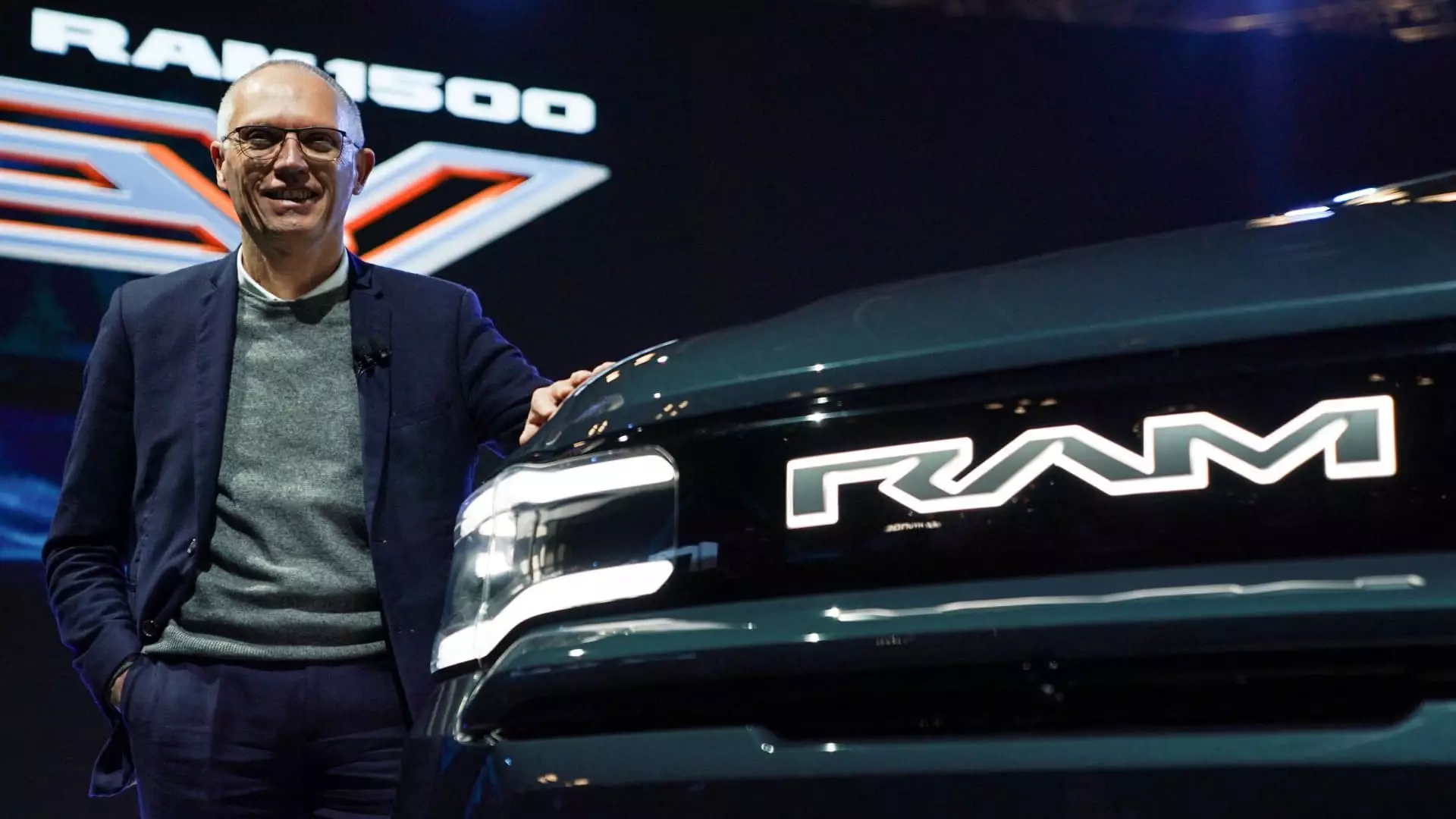As the automotive landscape continues to evolve, Stellantis, the conglomerate resulting from the merger of Fiat Chrysler and PSA Groupe, finds itself grappling with significant challenges. Recently, tension within the company has reached a boiling point, particularly as CEO Carlos Tavares receives backlash not only from the United Auto Workers (UAW) but also from the very dealers responsible for delivering vehicles to consumers. Stellantis’s reputation and market presence are at stake, and the pressures facing Tavares encapsulate broader themes of corporate governance and accountability in an industry that is shifting beneath their feet.
In an unprecedented move, Stellantis’ dealer network, represented by the National Dealer Council, has openly criticized Tavares’s approach to management, voicing concerns over declining sales and production cutbacks. In an open letter penned by Kevin Farrish, the head of the dealer council, Tavares was accused of prioritizing short-term profits over sustainable growth and brand integrity. Farrish’s remarks highlight a grim situation: “The market share of your brands has been slashed nearly in half,” he stated, delivering a piercing critique that underscored the mounting grievances felt by the 2,600 dealers across the U.S.
With the visibility of these critiques, it becomes clear that the dealer body feels besieged by the ramifications of executive decisions. Historical data reveals a continuous decline in U.S. sales, dwindling from a peak of 2.2 million vehicles in 2018 to just over 1.5 million last year, contrasting sharply against the growth of the broader automotive market. This factory-level angst escalates when considering the cumulative effects of plant closures and layoffs, heightening concerns for not just the dealers but the entire supply chain.
In response to the letter, Stellantis defended its strategies by pointing to recent sales increases, such as a reported 21% rise in August compared to July. This metric, however, feels interwoven with underlying issues of consumer trust and market position. The company’s assertion that it is embarking on a positive trajectory raises questions about the sustainability of such short-term metrics in the face of long-term brand rebuilding.
Ironically, while Stellantis reported a first-half net profit of 5.6 billion euros—a seemingly positive outcome—the stark 48% decrease in comparison to the previous year hints at larger systemic problems. Investors are clearly unsettled, evidenced by a decline in stock value of approximately 36%. The gradual erosion of Stellantis’s brands, once pillars of the American automotive industry, raises questions about the direction in which Tavares and his team are steering the company.
Tavares, who took the helm following the merger, has committed to a stringent “Dare Forward 2030” plan aimed at maximizing revenue with aggressive cost-cutting. Though intended to streamline operations, these measures have been met with criticism, revealing a schism between corporate strategies and the realities facing employees and dealers. Former executives, speaking on condition of anonymity, described the cost reductions as “grueling,” pointing to potential long-term repercussions for both morale and brand loyalty.
Moreover, ongoing tensions with the UAW reveal an underlying dissatisfaction that can no longer be ignored. UAW President Shawn Fain’s accusations of Tavares’s “price gouging” further emphasize the disconnect between the executive suite and the workforce, suggesting a failure to honor agreed-upon labor terms. In addition, the union is set to rally against what they perceive as “gross mismanagement,” indicating the seriousness of the grievances that span from executives to rank-and-file employees.
As Stellantis maneuvers through this tumultuous period, the implications of Tavares’s leadership will become increasingly significant. The company’s future depends heavily on its ability to address concerns raised by its dealer network, foster trust and cooperation with the UAW, and ultimately realign its strategies to ensure sustainable growth. The tensions, while concerning, may offer a unique opportunity for reflection and restructuring.
The path forward requires more than just focusing on profitability; it necessitates a comprehensive reevaluation of Stellantis’s corporate culture, dealer relations, and workforce engagement. By steadfastly addressing these fundamental issues, Stellantis can aim not only to recover its market share but also to restore confidence in its brands—ensuring that in an industry marked by rapid change, they remain a relevant competitor in the automotive sphere.
While the conflicts within Stellantis are glaring, they also present an opportunity for renewal and growth—a chance to embrace a collaborative approach that values input from all stakeholders. The stakes are high, and the world will be watching how Stellantis chooses to navigate its increasingly challenging landscape.


Leave a Reply